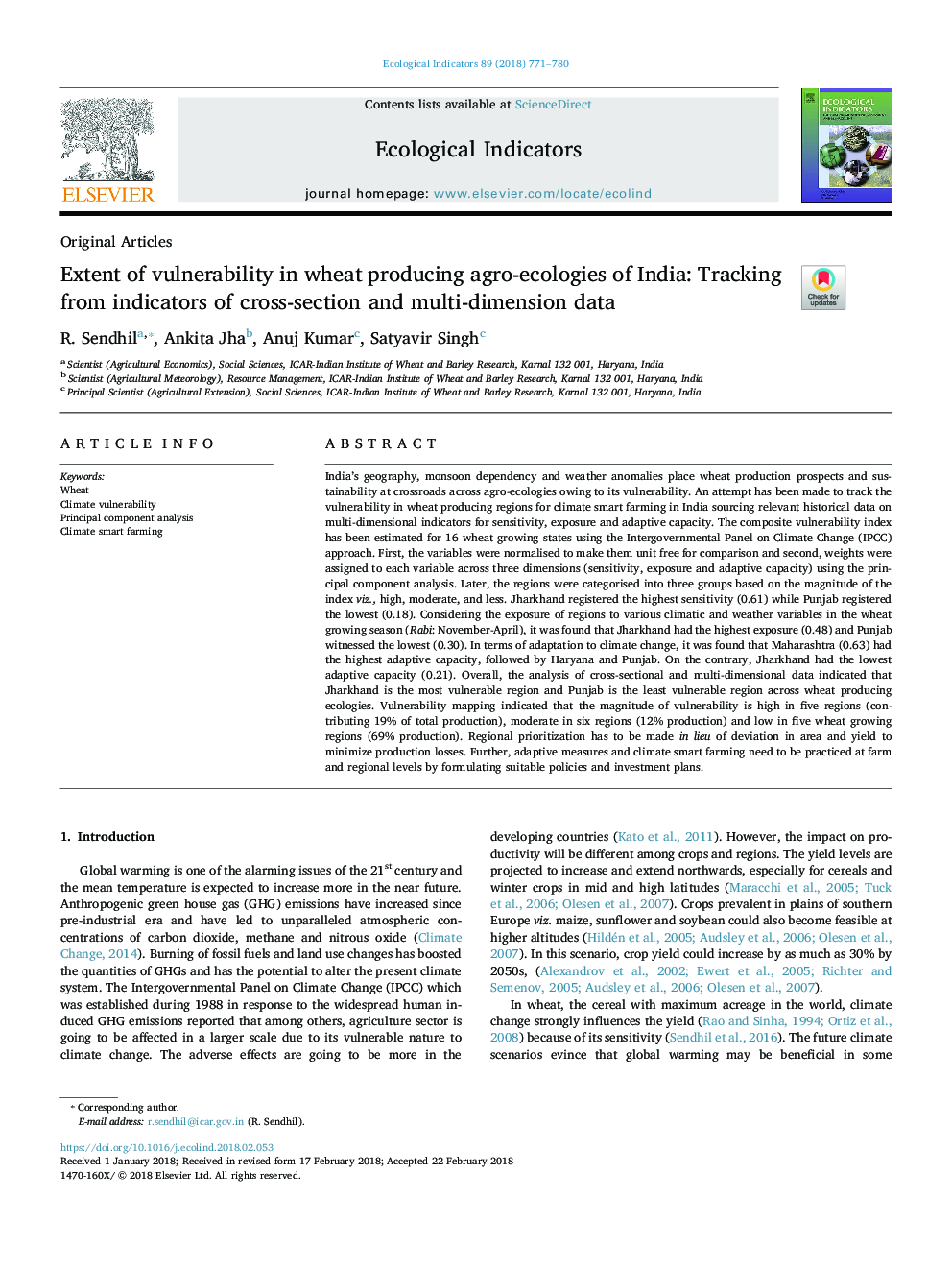| Article ID | Journal | Published Year | Pages | File Type |
|---|---|---|---|---|
| 8845528 | Ecological Indicators | 2018 | 10 Pages |
Abstract
India's geography, monsoon dependency and weather anomalies place wheat production prospects and sustainability at crossroads across agro-ecologies owing to its vulnerability. An attempt has been made to track the vulnerability in wheat producing regions for climate smart farming in India sourcing relevant historical data on multi-dimensional indicators for sensitivity, exposure and adaptive capacity. The composite vulnerability index has been estimated for 16 wheat growing states using the Intergovernmental Panel on Climate Change (IPCC) approach. First, the variables were normalised to make them unit free for comparison and second, weights were assigned to each variable across three dimensions (sensitivity, exposure and adaptive capacity) using the principal component analysis. Later, the regions were categorised into three groups based on the magnitude of the index viz., high, moderate, and less. Jharkhand registered the highest sensitivity (0.61) while Punjab registered the lowest (0.18). Considering the exposure of regions to various climatic and weather variables in the wheat growing season (Rabi: November-April), it was found that Jharkhand had the highest exposure (0.48) and Punjab witnessed the lowest (0.30). In terms of adaptation to climate change, it was found that Maharashtra (0.63) had the highest adaptive capacity, followed by Haryana and Punjab. On the contrary, Jharkhand had the lowest adaptive capacity (0.21). Overall, the analysis of cross-sectional and multi-dimensional data indicated that Jharkhand is the most vulnerable region and Punjab is the least vulnerable region across wheat producing ecologies. Vulnerability mapping indicated that the magnitude of vulnerability is high in five regions (contributing 19% of total production), moderate in six regions (12% production) and low in five wheat growing regions (69% production). Regional prioritization has to be made in lieu of deviation in area and yield to minimize production losses. Further, adaptive measures and climate smart farming need to be practiced at farm and regional levels by formulating suitable policies and investment plans.
Related Topics
Life Sciences
Agricultural and Biological Sciences
Ecology, Evolution, Behavior and Systematics
Authors
R. Sendhil, Ankita Jha, Anuj Kumar, Satyavir Singh,
